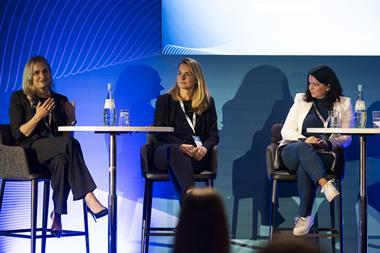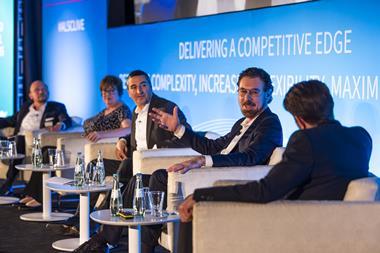The market continues to fall, while transport capacity is exiting the market at an alarming rate. Even with prospects for long-term growth, the lack of investment could mean Russia will struggle to move the goods again when customers return to show rooms. We report from the Automotive Logistics Russia conference in Moscow.
The Russian market is facing difficult economic and political problems this year, with the Ukraine crisis contributing to what looks likely to be a second consecutive year of falling sales. The depreciation of the rouble against the dollar and euro have hurt both the import of finished vehicles as well as carmakers whose supply chains depend on a substantial amount of foreign material. Although Russia is not a large export centre, carmaker have also seen one of their main markets virtually cut off for vehicle deliveries from Russia, as carmakers shut down routes to Ukraine or are blocked from access.
All of this is putting even more price pressure on OEMs, which in turn has contributed to falling rates and a lack of investment in the automotive logistics chain for Russia. In some cases, there are already signs of declining delivery quality as a result, including longer leader times and higher damage rates.
While there appear to be clear impacts that the economic situation is having on logistics services and providers, the Autmotive Logisttics Russia conference this year also showed positive signs of development. Avtovaz, the largest carmaker in the country, is embarking on a significant restructuring of its operations under chief executive Bo Andersson, who has already proven that he can turnaround ailing Russian manufacturers with his success at the Gaz Group. According to head of corporate development, Erik Barenthein, supply chain and logistics will play an important role in Avtovaz’s development, from changing its production to a ‘pull’ system based on dealer and customer orders, to improving the service parts supply chain to meet more generous warranty terms. “We’re going to make changes that are in some ways basic, but are logical and smart,” he said.
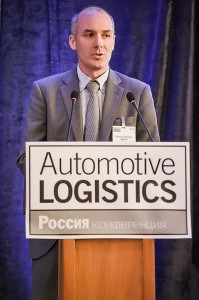
Delamare noted that the company is now developing a block train service across the Trans-Siberian Railway between China, Central Asia, Russia and Europe. “We will be targeting both inbound flows, including CKD kits and spare parts, as well as finished vehicles,” he said, highlighting that the growth of Chinese carmakers in Russia was prompting the opportunity for more cross flows of parts and vehicles.
There were even some positive developments from one of Russia’s oldest and most perennial problems: customs clearance. Wilhemina Shavshina, legal director at DLA Piper and an expert on customs and industrial regulation, revealed that the Russian customs authority has been trialling different categories of importers, including a ‘white sector’ designation that makes clearance much more straightforward. She also revealed the customs regime is moving more firmly towards automation and electronic documentation (read more here).
There was inevitably debate about price and the relationship between OEMs and logistics providers; however, executives also expressed a desire to work together and improve relationships across the supply chain. Oleg Shamba, director of supply chain management for Fiat Chrysler Russia, stressed that there needed to be more teamwork rather than antagonism – especially given that Russia’s market can be so unpredictable.
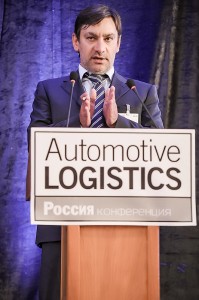
“The market is depressed now, and it has hit most segments of the market,” Shamba continued. “Perhaps we will even see a repetition of 2009. But we have to work together to find ways to survive, because things can change very quickly.”
From localisation to capacity woes
In recent years, the Russia conference has been dominated by talks about localisation, particularly for OEMs and tier suppliers who signed agreements with the Russian Ministry for Economic Development that set localisation targets of 60% by 2018. This year there was less talk about it – but not because the targets have been achieved, or are necessarily on track. It would appear that some OEMs have put their localisation projects on hold as their sale volumes plummet.
“Some companies are pushing localisation very aggressively, with levels of 70-80%, while other carmakers have halted localisation in response to the crisis,” said Alexander Rogan, chief executive officer of Russia Supply Chain, a consultancy. “I cannot confirm what the government thinks, but I suspect there has been a nod from the government since the consequences of not meeting the localisation targets would be billions of roubles in back taxes.”
Rogan said that carmakers whose supply chains were more localised within Russia had been more insulated from the crisis, and particularly from the depreciation of the rouble. However, some of the stronger sales growth this year has actually come from Asian producers, including carmakers like Nissan, Toyota and Mitsubishi, who are both building locally and importing from a variety of markets, including Thailand and Japan, where the currency has been more favourable.
 Elena Lukanova said that Adampol/Vectura operated some routes to Russian regions at a loss of -14 per cent
Elena Lukanova said that Adampol/Vectura operated some routes to Russian regions at a loss of -14 per cent“We take that loss out of our depreciation costs – it means that it is impossible to invest in capacity,” she said.
The situation appears to be getting dire in a number of segments. According to Dimitriy Tikhomirov, managing partner at Inter Auto Group, the largest vehicle haulier in northwest Russia, car haulier capacity is reducing in the Russian market at an even faster rate than in 2009 – when sales collapsed by 50%. Some carriers were going out of business, while others have deliberately parked trucks and assets to wait for better rates. But so far, little has stopped their decline. At the same time, the cost of fuel has risen by 10% this year, while the fall in the rouble has also resulted in other cost increases. He warned that unless OEMs and logistics providers could find a way to work together better, the industry would struggle to handle any recovery in volumes. (Read more here.)
“Think ahead. Things can change quickly in Russia,” he said. “Will you be ready to meet demand when there is recovery in the market?”
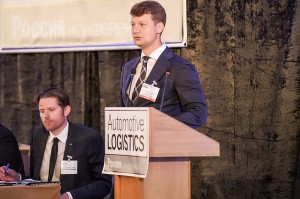
A need to improve quality
Carmakers stressed the need to find cost savings across the supply chain, at the same time that gaps in service levels needed to be filled and overall quality improved. Alexey Kokotkin, manager of vehicle logistics for Toyota in Russia, pointed to the need for new solutions and better service in port processing and storage, as well as across central and eastern part of Russia. “We also want to develop service on the Trans-Siberian railway, as trucks alone won’t do it,” he said. “But there is a lack of proper equipment – there are railcars in the market that can carry up to ten cars, and more SUVs than normal railcars, but not enough are being used.”[sam_ad id=6 codes='true']
He also pointed to Toyota’s relentless tracking of KPIs, which includes expectations that less than 1% of cars will arrive with more than one day’s delay from the expected lead times. However, there have been periods where delays had reached three days or more. “These delays were not just a challenge – they were horrible and unacceptable,” said Kokotkin.
The condition of Russia’s truck fleet for finished vehicle logistics was a particular concern for both OEMs and logistic providers. Road is the primary mode of transport across Russia, and is expected to retain a high share even as rail transport increases, according to Elena Lukanova. She expected rail’s share to grow from 27% to 33% by 2020, but noted that all vehicles moved by rail would still need be hauled by truck at some point. However, because of low margins and rising costs, equipment is ageing and struggling to keep up with the latest developments.
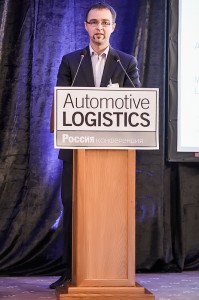 Toyota's Alexey Kokotkin said that persistent delays of 3 days or more were 'horrible and unacceptable'
Toyota's Alexey Kokotkin said that persistent delays of 3 days or more were 'horrible and unacceptable'Dimitriy Tikhomirov also pointed out that the age of the Russian fleet is ageing at an alarming rate. In 2011, for example, 24% of trucks had driven 1m kilometres or more. This year, the ratio is 64%. And by the current trend, an incredible 85% will be at this level by next year (Inter Auto Group, by contrast, has renewed 70% of its fleet over the past two years, Tikhomirov said).
“The result of the poor rates and fleets is a significant increase in delivery time, and a catastrophic drop in quality,” said Tikhomirov.
To boot, he added that the industry was struggling with a serious lack of drivers. Inter Auto has been forced to set up special courses for its drivers as there are not enough skilled operatives to go round, he said.
The trend is worrying, not least because OEMs have identified the opportunities for efficiency and quality improvements that exist with some of the latest equipment for road and rail. Toyota’s Kokotkin pointed to screens that could be installed that significantly reduce damage levels, as well as trailers that have higher loading factors.
Read these other stories from the Automotive Logistics Russia conference.
However, logistics providers pointed out that without the requisite increase in margins, they would be unable to invest. Lukanova suggested that some routes would need an increase of at least 19% just for carriers to make enough profit to invest. She also suggested that longer-term contracts would be helpful. “We need a price that will match quality,” she said.
OEMs were themselves divided on the question of longer contracts. Toyota’s Kokotkin admitted that the company typically fixes prices for one year, and so renegotiates each year. Others, including Renault Nissan’s Chris Godfrey, manager for outbound engineering, suggested that one year was too short, and 2-3 years would be more appropriate in most cases.
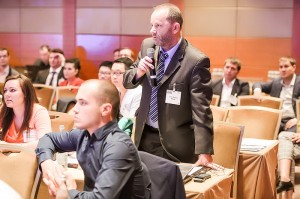
“I understand it is not easy to do this, and we would need the support of the Ministry of Economic Development, including building filling stations,” she said. “But I think if we had several in Moscow and St Petersburg, they would start to spread. It is something that we need to do.”
Going for Ichiban
The Russian market could decline by 5-10% this year compared to 2013 (when sales were 2.8m units), however the long-term outlook for most companies is still for reasonable growth. Erik Noeklebye, president and head of region Europe for Wallenius Wilhelmsen Logistics, said that his company expected Russian light vehicle sales to reach 3.5m units by 2019 – a lower forecast that might have been expected previously, but a significant increase nonetheless. Although vehicle imports make up a smaller share than they did prior to the 2009 crash, Noeklebye also suggested that they would increase as well. Vehicle imports from European plants, for example, are expected to increase from around 400,000 last year to 585,000 by 2019. He said such developments were part of a larger trend to fragmented ocean flows that ro-ro providers are facing (read more here).
Many expect higher growth to actually come outside Russia’s richer northwest region, and rather in the central and eastern parts of the country. Some carmakers are already exploiting this growth, and changing their networks as a result. Yasuaki Hikiami, logistics director for Mitsubishi Motors Corporation (MMC) Rus, revealed that in March Russia became the largest global sales market for the Japanese carmaker. Although its volume is relatively modest – it has a roughly 4% market share in Russia, and sold 33,000 vehicles in the first five months of this year – the carmaker has seen its sales expand 2% although the overall market has declined around 7%. In particular the carmaker is strong in the SUV market, where it ranks fourth.
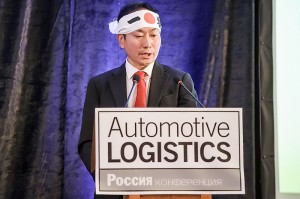
With the shift towards more SUVs, as well as across the Russian regions, Yasuaki said that MMC’s logistics risked becoming more inefficient if it didn’t make adjustments to its network – load factors would decline, and lead times would be longer, for example. The future concept, he said, was to use equipment with higher load factors for SUVs, as well as to decentralise its network from Moscow for both finished vehicle and spare parts distribution.
“We would like to setup a depot in the Urals or Siberia for finished vehicles. We would also like to implement a railways solution from the Far East for our imports from Japan and the US,” he said. “These options are not yet economically feasible, but I strongly believe that we need to go in this direction.”
Yasuaki pointed to other network possibilities, including introducing more Far East ports as well as Black Sea ports to serve Russia, Ukraine and Kazakhstan.
On the spare parts side, the carmaker has already run trials for deliveries to Moscow by railway, while earlier this year it opened a warehouse in Yekaterinburg for regional distribution.
Yasuaki said that the carmaker used a Japanese word across its dealers and logistics providers – Ichiban – that translates as ‘number one’. The executive, donning a traditional Japanese hachimaki (bandana), appealed to providers to help the carmaker grow. “If you understand and agree with our concept, I am looking forward to hearing your proposals,” he said. “Please support us so that Mitsubishi can be Ichiban in Russia!”
Indeed, eastward and regional growth was a familiar topic for others at the conference as well. Sergey Levshin, outbound logistics manager for Nissan, said that Renault Nissan was also seeing the biggest growth in central and eastern regions. “This is a big challenge because it is still small volumes over a big area. We are still looking for new solutions,” he said.
Damage rates and quality in the underserved east remain a significant issue, however. According to Yasuaki, just three dealerships in those regions account for 25% of the claims for damage.
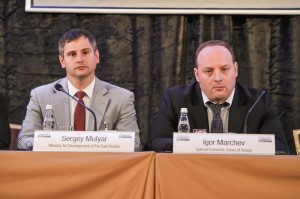 Sergey Mulyar and Igor Marchev are trying to attract OEMs to central and eastern regions of Russia
Sergey Mulyar and Igor Marchev are trying to attract OEMs to central and eastern regions of RussiaStealing the talent
Eastern regions are also competing to attract investment in manufacturing and suppliers. Special Economic Zones have been setup across Russia with a number of tax and custom duty incentives. Sergey Mulyar, from the Ministry for the Development of the Russian Far East, pointed out that Russian president Vladimir Putin has said that developing the Far East economy would be the top priority of the 21st century for Russia. He pointed again to many tax and customs advantages, as well as strategic positioning close to fast growing Asian markets, including China and Indonesia. Automotive is one of the industries that the region is targeting.
However Mulyar acknowledged that the market in the Far East is very small – only some 6m inhabitants – with very poor logistics links and infrastructure. The Sollers plant in Vladivostok is struggling, he admitted, and overproducing vehicles. There are also shortages of skilled labour. But Mulyar said the region was taking a mercurial approach to attracting companies and talent.
“We are going to ‘steal’ people from other regions and create the conditions for them to want to relocate here,” he said.
Other regions are further developed for automotive manufacturing, including Kaluga south of Moscow, Togliatti where the traditional Russian manufacturing base is located, and in Alabuga, where Ford Sollers has production.
“Human resources have been strongly considered when determining the location of the special economic zones, and there is no labour or skills deficit in Alabuga or Togliatti, for example,” said Igor Marchev, from the Ministry of Economic Development. He added that such zones also include component and logistics operations.
 Andrey Scherbakov stressed the importance of guaranteed, on-time delivery of spare parts for Toyota dealers
Andrey Scherbakov stressed the importance of guaranteed, on-time delivery of spare parts for Toyota dealersWhile there are clearly troubles for providers and OEMs today in Russia, companies have also shown a very strong push towards improving quality and efficiency in logistics. Toyota continues to show impressive discipline across its spare parts supply chain, for example. According to Andrey Scherbakov, director of parts supply chain and warehouse operations, the service rate target is higher than 97%. This past January the company opened up a regional warehouse in Novosibirsk to complement its main warehouse in Moscow.
“This is helping us to secure guaranteed delivery and lead times,” he said. “I want to draw your attention to the word ‘guaranteed’. We don’t want to deliver any later or earlier than the set delivery time.”
The company has also been vigorously applying ‘Toyota Production System’ and lean methodologies to its service parts supply chain. That includes daily ordering by dealers to ensure an even flow and consistent inventory. “The result is that we have reliable customer demand data, an optimum inventory level, stable deliveries from suppliers and highly planned warehouse operations,” he said.
There is also a continuing push for modernisation of the Russian supply chain, with the current economic stagnation accelerates the process for some companies. Perhaps the most notable example could be happening for Avtovaz, the builder of Lada and largest carmaker in the country. Avtovaz will shortly be majority-owned and control by Renault Nissan. The hiring of Bo Andersson was also a clear symbol of its objectives: Andersson led the turnaround efforts at LCV and contract manufacturer Gaz Group. Before Andersson took over, Gaz was losing 30 billion roubles per year; under his time as president, its margins grew to 10%.
Erik Barenthein, who worked closely with Andersson and has now also joined him at Avtovaz, made it clear that the carmaker is suffering and has a long road to climb. He acknowledged that logistics and supply chain would have an important role to play in the carmaker’s transformation.
Similar to the turnaround applied at Gaz, Avtovaz plans to improve its payment terms to suppliers and partners, improve its warranties and spare part distribution and switch its production to a customer-order based ‘pull’ system to avoid overproduction. The carmaker is also planning ten launches or redesign of vehicles over the next 4-5 years – a flurry of investment that follows decades when the car was barely updates.

Barenthein admitted that Avtovaz’s changes would be more about being “smart” rather than the high-end optimisation that companies like Toyota are already doing in Russia. For example, the company is looking to switch to direct import routes for the CKD kits that it imports for Renault Nissan production. “We are going to try to avoid going from Romania to France and then to Russia if we can go straight from Romania, for example,” he said.
Avtovaz is also looking to use local milkruns and establish more standard processes for pickups and deliveries. He pointed to an example of one supplier that was located next door to an Avtovaz plant, however it was taking more than eight hours for delivery to the line. “Some of that was contracting, but it was also difficultly and bureaucracy in getting through the plant gate,” he said. “We put a team on it and established a flow that takes about 1.4 hours, which is reasonable for the time to unload. It is basic and common sense.”
Taking a page from the Toyota Production System, the company has also been moving towards more frequent, small lot deliveries rather than using large truck deliveries that took a long time to unload and which required warehousing for the cargo. “Now we have switched to more frequent runs with smaller deliveries that go direct to the line rather than via a warehouse,” he said.
Finally, Barenthein also hinted that there would be much closer collaboration between Avtovaz and its alliance partners, as so far the Russian OEM has run separate purchasing, supply chain and logistics operations to Renault Nissan. It has also had separate contract terms and standards, something Barenthein recognised was inefficient.
“We will leverage the Renault Nissan alliance 100%,” he said. “We will unify contracts and we want more global contracts across the brands.”
The next conference in the Automotive Logistics global suite of conference will be in August in Balitmore, Maryland for the very first Import/Export North America, powered by Finished Vehicle Logistics and AIAG.

























